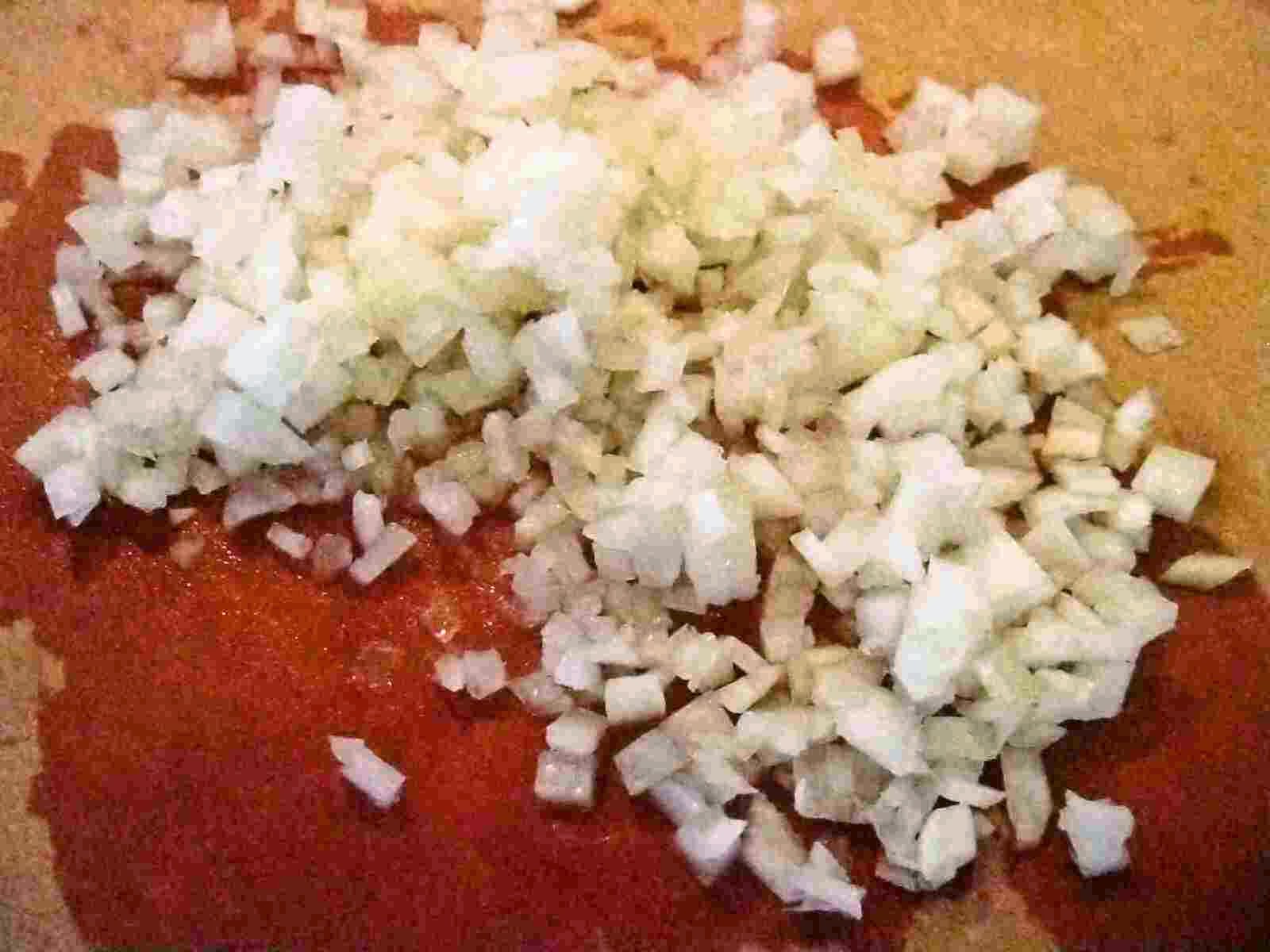Very tasty. Sauteed onion and bay shrimp add a nice sweet note and depth to a simple gochujang and miso mixture. My current favorite to combine with steamed rice and simple, almost plain namul.
1/2 of recipe:
62 calories; 6.3 g protein; 1.4 g fat; 6.4 g carbohydrate; 5.7 g net carbs; 239 mg sodium (with reduced-sodium miso; 274 mg with regular miso); 45 mg cholesterol; 0.7 g fiber
<Ingredients>
50-60 g bay shrimp (boiled; 60 g in photo)
1/4 small or 1/6 medium onion (40 g in photo)
2 tsp gochujang
1 tsp miso
2-3 tsp stock (cooking water from boiling daizu moyashi soybean sprouts in photo)
1/2 tsp sesame oil (not in photo)
<Directions>
1.
Finely chop onion.
2.
In a frying pan, heat sesame oil, and saute onion on medium low heat.
3.
When transparent, add bay shrimp, and continue sauteing.
4.
Add gochujang and miso, and mix well.
5.
Add stock, mix well, and cook until sauce thickens, like gravy.
<Notes>
1/2 of recipe:
62 calories; 6.3 g protein; 1.4 g fat; 6.4 g carbohydrate; 5.7 g net carbs; 239 mg sodium (with reduced-sodium miso; 274 mg with regular miso); 45 mg cholesterol; 0.7 g fiber
<Ingredients>
1/4 small or 1/6 medium onion (40 g in photo)
2 tsp gochujang
1 tsp miso
2-3 tsp stock (cooking water from boiling daizu moyashi soybean sprouts in photo)
1/2 tsp sesame oil (not in photo)
<Directions>
1.
Finely chop onion.
2.
In a frying pan, heat sesame oil, and saute onion on medium low heat.
3.
When transparent, add bay shrimp, and continue sauteing.
4.
Add gochujang and miso, and mix well.
5.
Add stock, mix well, and cook until sauce thickens, like gravy.
<Notes>
- While the spiciness of the sauce largely depends on gochujang, you can adjust it by adding Korean red chili pepper.
- If stock is not at hand, sake works just fine.
- When using more onion, the sauce becomes quite sweet. If you think it needs more punch when tasting at the end, add Korean red chili pepper powder and cook for a while.
- This sauce tastes good when cooked until bubbly and slightly burnt -- thus, it is perfect for bibimbap in a hot clay pot or iron pan (substitutes for a stone bowl)!
- At left, an example of the sauce with nabeyaki bibinba (hot bibimbap in clay pot):
Toppings (along with rough sodium content) include: shungiku garland chrysanthemum namul (50 mg); daizu moyashi soybean sprout namul (30 mg); carrot namul (15 mg); eringi king oyster & maitake mushroom namul with Fresno pepper (15 mg); and plain scrambled egg (70 mg). Each namul is prepared with minimal salt, shiokoji salted rice malt or soy sauce. Total sodium content of the pictured bibimbap, including sauce, is around 420 mg. - Sodium content of gochujang varies significantly by manufacturer and product. The above nutrition figures are based on gochujang with a sodium content of 360 mg/tbsp (120 mg per serving in the recipe above). Some big-name brand products have over 1,000 mg sodium/tbsp. So shop around (or make your own).










No comments:
Post a Comment